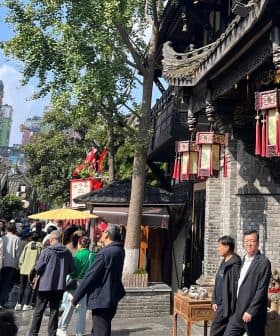Experts Skeptical of Dalmia's Pomace Oil 'Discovery'
With one sample, the Indian Olive Association's asserted "the humble olive pomace oil contains generous quantities of antioxidants."
 VN Dalmia
VN DalmiaThe article discusses the increasing health issues in India due to poor diet and sedentary lifestyles, leading to a rise in diabetes and other health problems. There is controversy surrounding the health claims of olive pomace oil, with some saying it contains beneficial nutrients while others argue that the refining process eliminates these compounds, leading to confusion among consumers. Overall, the debate highlights the challenges of promoting healthier dietary options in a country with a growing health crisis.
It is no longer just in the big cities of India where modern health menaces like diabetes are a major problem. The crisis is everywhere in the country as a culture’s traditionally starchy, sugary diet meets ever more sedentary lifestyles to form a perfect storm for a health care system on the brink.
So there is little wonder marketers in the country that is projected to soon overtake China as the world’s most populous seize every opportunity to highlight the health benefits of their products, even if some claims might be a stretch.
Last September, Leonardo Olive Pomace Oil, one of India’s leading brands, was served a notice by the Advertising Standards Council of India (ASCI) to withdraw its print advertisements that claimed the product “helps fight cholesterol and heart disease, lowers blood pressure, controls and prevents diabetes and fights cancer.”
In its decision, the ASCI said, “Pomace olive oil is produced by solvent extraction and has polycyclic aromatic hydrocarbons (PAHs) which are both mutagenic and carcinogenic. This is contradictory to the claim made for olive pomace oil in fighting cancer. Additionally, the health benefits of olive oil are from extra virgin olive oil due to its antioxidant content, which is not present in pomace olive oil. Hence misleading claims are portrayed about the benefits of consuming pomace olive oil.”
Since extra virgin olive oil is unrefined, meets certain chemical parameters and is free of taste defects, it is widely considered to be richer in nutrients than the refined grades which have undergone industrial processing. Now, in yet another effort to lift the status of olive pomace oil, India’s largest olive oil company says that’s not always the case.
In an email sent last week to the International Olive Council (IOC), VN Dalmia, chairman of Dalmia Continental, which sells Leonardo brand oils, touted the “discovery of micro-nutrients in olive pomace oil.” Dalmia, who is also the president of the Indian Olive Association, produced lab reports that showed a higher amount of the compound tocopherol in a sample of olive pomace oil than in any of nine samples of extra virgin olive oil tested. Dalmia pointed out that the olive pomace oil tested had no added virgin oil that would presumably contribute some of the compound.
Dalmia has been criticized for focusing his marketing efforts on olive pomace oil — the lowest edible grade made by chemically extracting the last bit of oil from leftover olive pits and pulp, that is shunned by much of the world where it is relegated to use in foodservice.
Speaking in April at a seminar that was part of the New York International Olive Oil Competition, Dalmia laid out what some attendees called convincing reasons for asking Indians to consider the grade that can’t even be legally called “olive oil.”
Traditional Indian cooking often calls for oil to be added to a hot pan, which would eliminate the sought-after tastes and many of the nutrients in extra virgin olive oil. Olive pomace oil costs far less than other grades, and what Indians really need is the “lowest hurdle” to a monounsaturated fat that can replace the unhealthy polyunsaturated seed oils that have been contributing to their early deaths, Dalmia argued.
Tocopherols are among the beneficial chemical compounds in olives and olive oil, and Dalmia cited in his email to IOC Executive Director Jean-Louis Barjol lab reports showing that the sample of olive pomace oil had higher levels of both alpha- and beta-tocopherol than the nine samples of Italian extra virgin olive oils tested in 2012 that included the brand names Colavita, Colonna and Monini.
Barjol responded by asking Dalmia for a sample of the olive pomace oil that was tested so he could have an IOC lab conduct a separate analysis, but confirming the high levels of tocopherol in the one, or as one chemist called “miraculous,” sample of olive pomace oil might serve little purpose.
Studies have shown that polyphenols and micronutrients are practically eliminated during the harsh processes of chemical refining and deodorization. “Tocopherol is sensitive to the refining process and it breaks down easily,” said Selina Wang, research director of the UC Davis Olive Center.” In the same way the compound fights oxidation in our bodies, Wang explained, it spends itself quickly combating the process during every stage of refining.
Tocopherol and other compounds can be added artifically to olive pomace oil, though producers rarely go through the trouble. Wang said the IOC lab could see if the tocopherol has a structure that would indicate it was added after processing. Asked if such an analysis would be performed on the pomace oil sample he would soon receive from Dalmia, Barjol said, “Pomace oils generally contain higher amounts of tocopherols than the olive oils obtained from pulp. However, during refining can see significant losses of these compounds. That is why in this case being a refined pomace oil, we requested a certificate of full analysis to the stakeholders as well as a product sample in order to study it properly.”
When Wang was asked if she would find it surprising to discover higher levels of tocopherols in olive pomace oil than in extra virgin olive oils, she responded with little hesitation: “Absolutely.”
“It makes no sense,” said another chemist, olive oil expert Gino Celletti, who also noticed irregularities in the lab reports for the extra virgin samples Dalmia presented. One sample, for example, showed a peroxide value so high that it would have certainly resulted in the detection of rancidity by taste testers, stripping the oil of its extra virgin status, yet no defects were recorded in the lab report. Celletti also questioned why nine extra virgin olive oils were tested, but just one pomace oil.
The elevated level (370mg/kg) of tocophorols found in the sample of olive pomace oil “would make any authority laugh,” Celletti said. “I have never seen a value of alfa-tocopherols like that in a pomace oil and I do not know who could be interested in evaluating it in a refined pomace oil anyway.” Celletti said tocopherols levels are reduced to just trace amounts during refining.
“One of our members tested Olive Pomace Oil (OPO) in his lab and found tocopherols at a pretty high level,” Dalmia explained. “It did not seem illogical because several other solvent-extracted refined oils have high tocopherols,” he said. “Technologists here explain to me that the reason lies in the efficiency of the solvent extraction process. It seemed logical, therefore, that OPO should have some micro-nutrients too. So we decided to have a sample tested in an IOC-accredited lab. When we got a result that indicated a high level of tocopherols, I asked for an analysis of extra virgin oils in order to compare. So they sent me the results of extra virgin oils picked up randomly from the market.”
The Indian Olive Association issued a press release with the title “Generous Micro Nutrients Discovered in Olive Pomace Oil,” citing the lab test on a single sample of olive pomace oil which it said was “blasting myths and contradicting assertions of food writers and nutritionists.”
“This pioneering investigation blows apart the misapprehensions and misperceptions of critics proving them to be completely and factually incorrect. The humble olive pomace oil actually contains generous quantities of antioxidants,” the release said.
The ongoing efforts by VN Dalmia to lift the status of olive pomace oil illustrates his confidence that the grade will serve as the entry-level MUFA that will spark a change for 1.3 billion people whose diets could use the help. However, in an industry rife with consumer confusion, what this latest initiative amounts to, some experts say, is just more misinformation.



